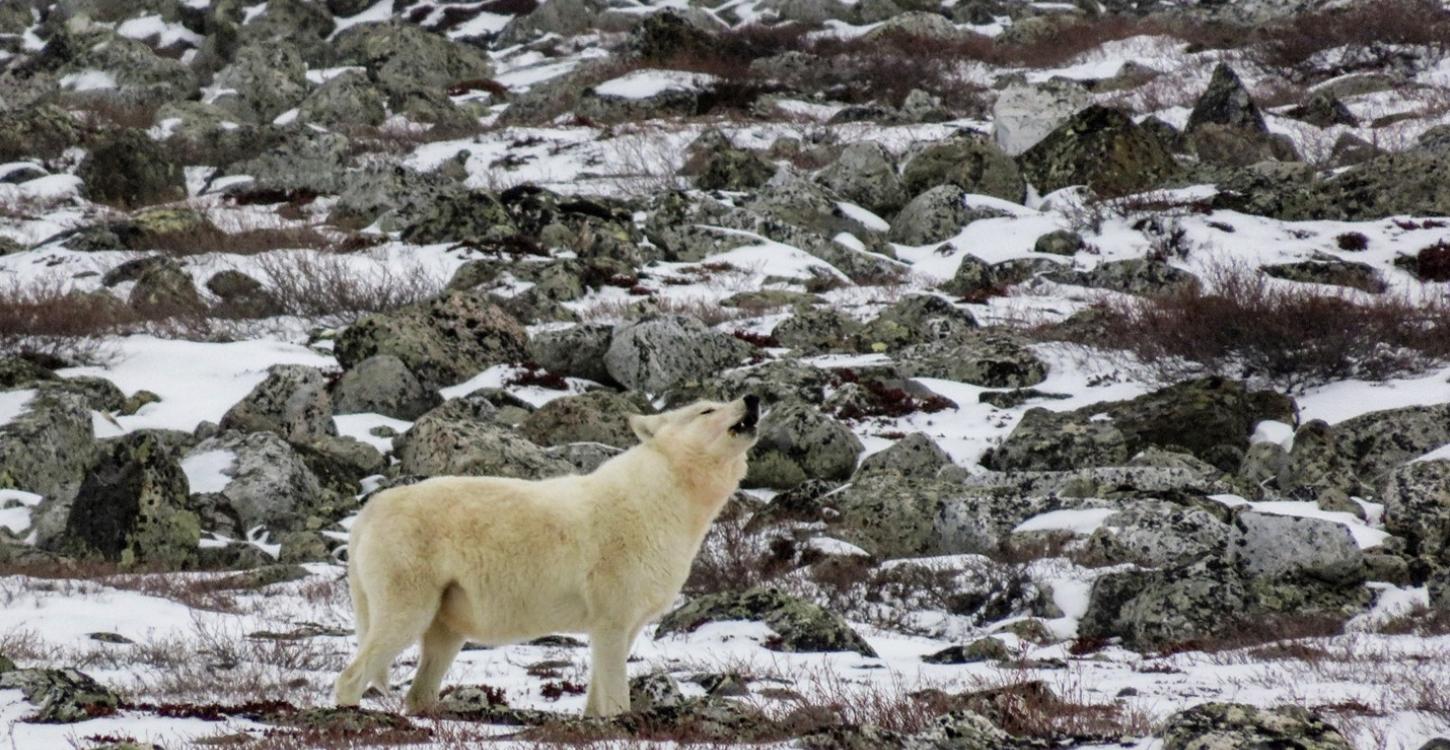
A wolf howling on the Tundra. Photo credit: Catherine Graydon.
Wolf Management Proceeding Update
January 26, 2021
In August 2020, the WRRB began reviewing the Revised Joint Proposal for Dìga (Wolf) Management in Wek’èezhìı submitted on August 25, 2020, by the Tłı̨chǫ Government and the Government of the Northwest Territories. This was a revision of a previous version submitted in early 2020 and reviewed during the February 2020 Board meeting. If you missed how this process has progressed over the last year, you can catch up by reading the Board Meetings Update: February & March 2020 and Wolf Management Proposal articles from April 1, 2020, and October 2020, respectively.
The Board has concluded that a serious conservation concern exists for both the sahtì (Bluenose-East), and kokètì (Bathurst) ekwǫ̀ (caribou) herds and, as such, increased management and monitoring actions are required in addition to harvest limitations and reducing disturbance to caribou and their habitat (already implemented), additional actions that focus on reducing predation are required to support caribou recovery.
Following the Board’s last meeting in December 2020, the Board released their Reasons for Decision Report on January 8, 2021. This report sets out four key concerns, and makes twenty recommendations including, “urging the GNWT and TG to proceed with the ground-based harvest as proposed with the addition of harvesters supports, including ɂekwǫ̀ and dìga distribution information, gas caching, and/or bait stations as per the Wolf Technical Feasibility Assessment: Options for Managing Dìga on the Range of the Bathurst Barren‐ground Caribou Herd (2017)”, and that they “should not continue aerial removals of dìga on the Kǫ̀k’èetı̀ and Sahtì ekwǫ̀ herd ranges; instead, more resources should be put towards ground-based harvest.” If you would like to read more documents from this process, you can do so on our Public Registry. To read the WRRB’s Reasons for Decision report, click here.